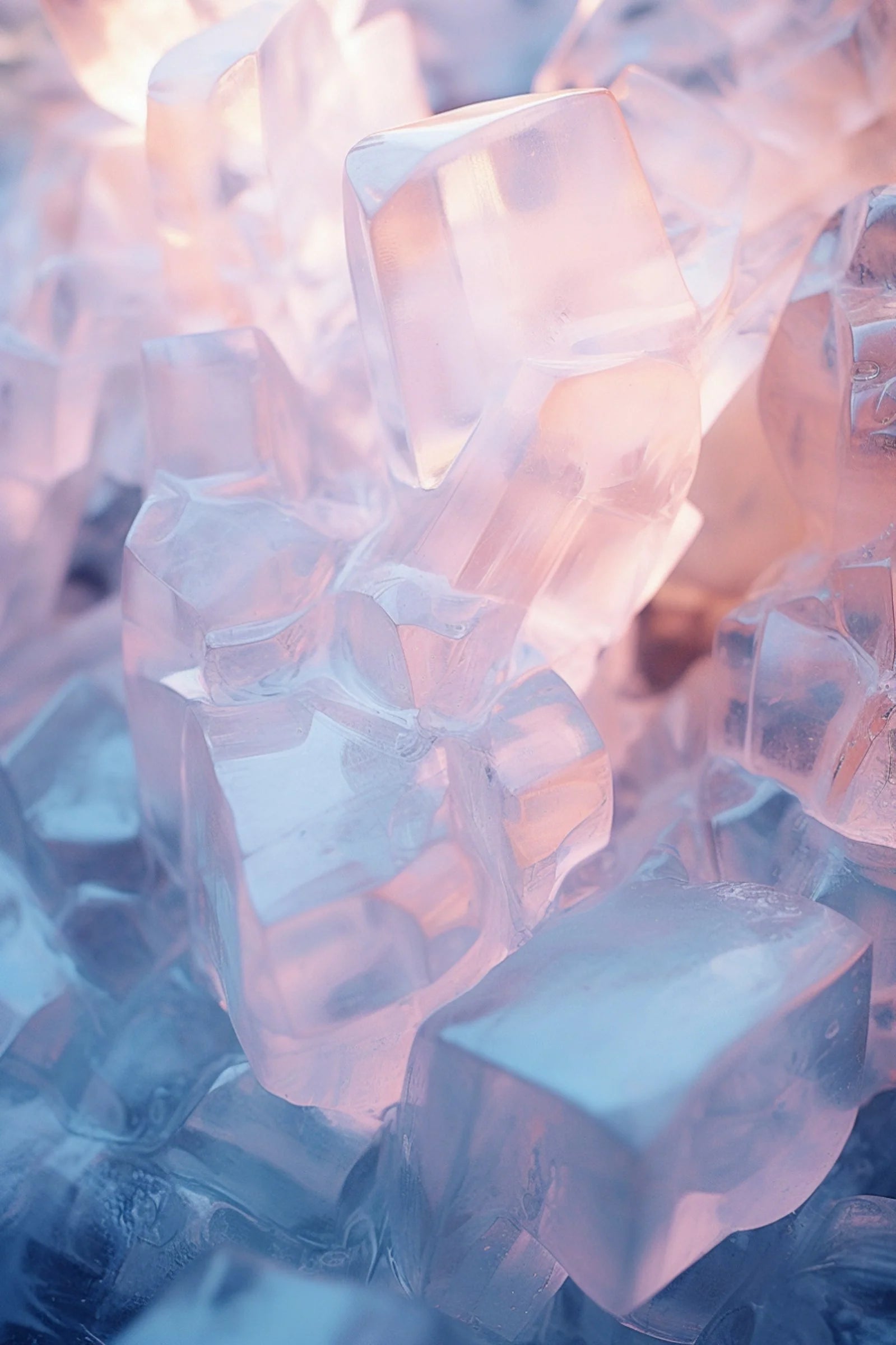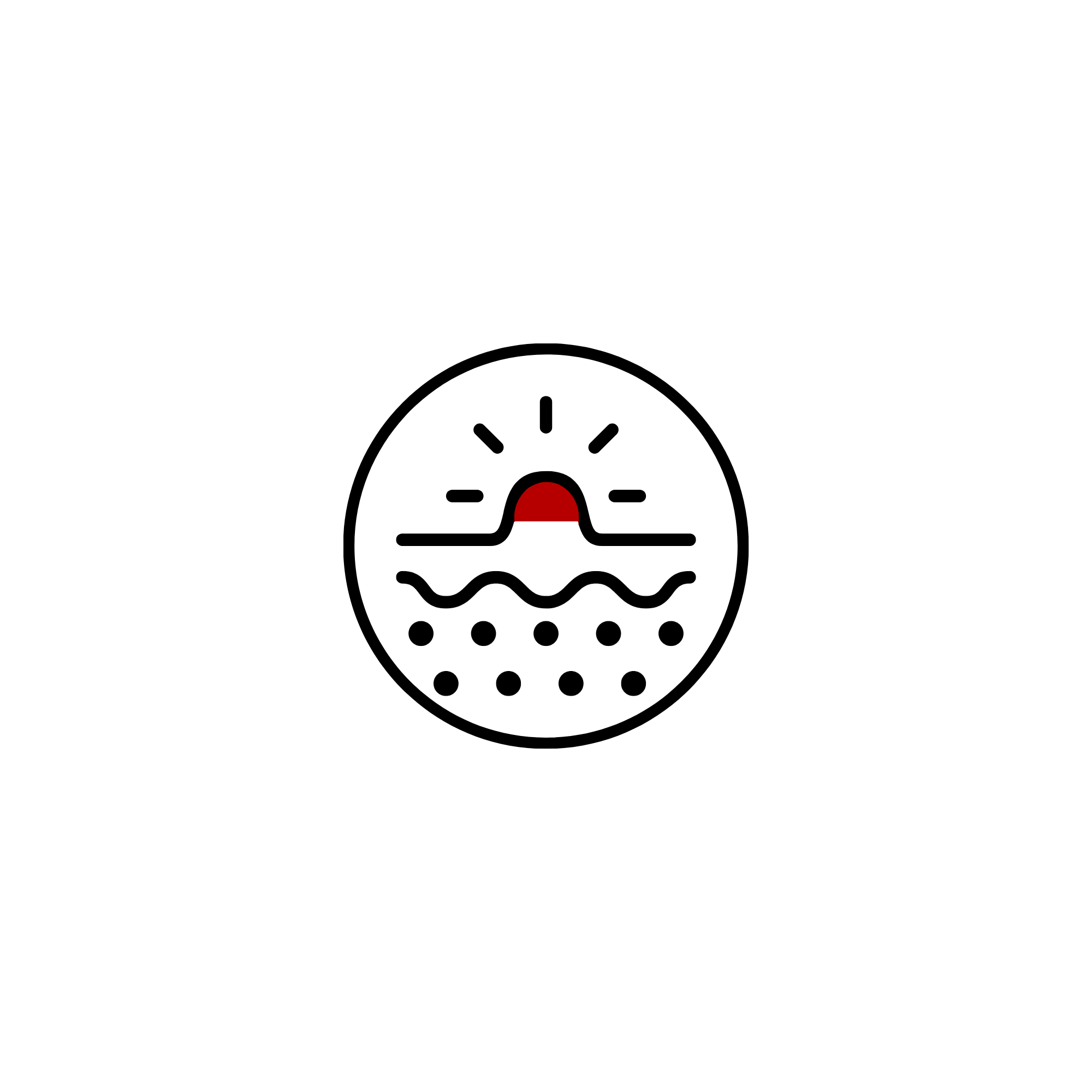

How to treat acne & reactive skin
Sabina JasinskiDealing with breakouts is hard enough—but when your skin also stings, flakes, or reacts to everything you apply, it can feel overwhelming. Acne and reactive skin often go hand in hand, creating a frustrating cycle of inflammation, sensitivity, and stress. The key? Treating both gently and strategically—without triggering more irritation.
This guide is here to help you:
- Understand the difference between acne and skin reactivity—and where they overlap
- Choose effective, barrier-friendly ingredients that won’t aggravate sensitivity
- Build a calm yet powerful skincare routine that clears breakouts and strengthens your skin
- Explore in-clinic and prescription options tailored to sensitive, acne-prone skin
- Avoid common triggers and myths that may be keeping your skin stuck
Whether you're experiencing hormonal acne, post-treatment sensitivity, or just feel like your skin can’t catch a break, this guide gives you the clarity and science-backed tools you need to restore balance.
Let’s dive in—because clear, calm skin is absolutely possible with the right approach.
ACNE VS REACTIVE SKIN
You can have acne without sensitivity, reactivity without acne, or both at once—which is especially common during barrier repair or overuse of acne treatments.
👉 That’s exactly why we’re covering them together in this guide—so you can treat breakouts without making your skin more reactive, and support your barrier without ignoring inflammation.
WHAT IS ACNE?
Acne is a chronic inflammatory skin condition involving:
- Clogged pores (from oil and dead skin buildup)
- Bacteria (C. acnes) that thrive in oily environments
- Inflammation that triggers red, swollen breakouts
- Hormonal or lifestyle factors that influence oil production
While mild acne can respond well to skincare, more advanced or persistent cases may need medical treatment.
WHAT IS REACTIVE SKIN?
Reactive skin isn’t a condition on its own—it’s a skin state. It means your skin becomes easily irritated, inflamed, or red in response to:
- Strong skincare actives (like retinoids or acids)
- Environmental triggers (sun, pollution, temperature shifts)
- Over-cleansing or over-exfoliation
- Stress or a disrupted skin barrier
Symptoms include:
- Stinging or burning when applying products
- Sudden redness or blotchiness
- Flaky or tight feeling skin
- Breakouts triggered by irritation—not oil
5 types of acne
1. Hormonal Acne:
Deeper, Cyclical & Often Misunderstood
Hormonal acne is driven by fluctuations in androgen hormones—like testosterone—that increase oil production and inflammation. While it can begin in puberty, it's especially common in adult women during:
- Menstrual cycles
- Pregnancy and postpartum
- Perimenopause or menopause
- Hormonal birth control changes
- Conditions like PCOS or thyroid imbalance
How to Spot Hormonal Acne:
- Deep, painful cysts or nodules (under the skin)
- Concentrated around the jawline, chin, neck, or lower cheeks
- Flares up cyclically, often premenstrually
- Often paired with dry or sensitive skin
- May resist typical acne treatments
Best Approach:
- Topicals: azelaic acid, niacinamide, sulfur, encapsulated retinoids
- Barrier support: ceramides, fatty acids, gentle hydrating layers
- Medical options: spironolactone, hormonal birth control, prescription retinoids
- Lifestyle: stress management, blood sugar regulation, sleep support
- Avoid aggressive routines—gentle consistency works best here.
2. Teen Acne:
Classic Congestion with High Oil Output
Teen acne is caused by puberty-triggered hormonal shifts, which increase oil production and clog pores. It's the most common acne type—and often responds well to consistent skincare.
How to Spot Teen Acne:
- Shiny, oily skin (especially in the T-zone)
- Blackheads and whiteheads (comedones)
- Red or pus-filled bumps (papules and pustules)
- Forehead, nose, cheeks, and sometimes back/chest
- May come and go with hormonal waves or stress
Best Approach:
- Cleansers: gentle salicylic acid or benzoyl peroxide 2–3x/week
- Moisturizers: lightweight but hydrating (don’t skip!)
- SPF: critical to protect skin and prevent post-acne marks
- Avoid over-cleansing or harsh scrubs—this worsens oiliness and irritation
- See a derm if breakouts are severe or causing scarring
3. Fungal Acne (Malassezia Folliculitis):
Often Mistaken for Acne
Despite its name, fungal acne isn’t true acne—it’s caused by yeast overgrowth in the hair follicles. It’s often mistaken for regular breakouts but doesn’t respond to acne treatments.
How to Spot Fungal Acne:
- Small, itchy, uniform bumps (no whiteheads)
- Common on the forehead, upper back, chest, or shoulders
- Doesn’t respond to traditional acne products
- Often triggered by humidity, sweat, antibiotics, or occlusive products
- May worsen with oily skincare or overuse of antibiotics
Best Approach:
- Topicals: sulfur, zinc pyrithione, ketoconazole cream or dandruff shampoo as a mask
- Lifestyle: keep sweat-prone areas clean and dry
- Avoid: thick, oily skincare or heavy SPF on the body
- If unsure, consult a derm to confirm and treat properly
4. Acne Mechanica:
Caused by Friction & Occlusion
Acne mechanica is caused by physical friction, heat, and trapped sweat, often due to masks, helmets, tight clothing, or even frequent face touching.
How to Spot Acne Mechanica:
- Breakouts appear in areas of contact: jawline, cheeks (from masks), shoulders, chest
- Often flares during hot weather, workouts, or with friction
- Red bumps, pustules, or clogged pores in clusters
- Not hormonal—driven by local irritation and occlusion
Best Approach:
- Cleansing: gentle cleanser after sweat exposure or exercise
- Barrier care: lightweight, breathable moisturizers to protect skin
- Avoidance: reduce friction (use mask pads, breathable fabrics)
- Treatment: salicylic acid or sulfur-based spot treatments as needed
5. Stress Breakouts:
A Mind–Skin Connection
Stress increases cortisol, a hormone that boosts oil production, triggers inflammation, and can delay skin healing—making it a hidden driver of breakouts.
How to Spot Stress Acne:
- Flare-ups during busy, emotional, or sleep-deprived periods
- Located on the cheeks, jawline, or forehead
- Can appear with a mix of whiteheads and inflammatory pimples
- May coexist with other stress symptoms: eczema, redness, dryness
- Often worse in those with pre-existing acne-prone skin
Best Approach:
- Routine support: simple, calming routine with hydrating and soothing ingredients
- Lifestyle focus: sleep, nervous system regulation (breathwork, adaptogens, gentle movement)
- Stress buffers: magnesium, B vitamins, and balancing skincare like niacinamide or centella
- Actives: keep gentle—azelaic acid, salicylic acid (in moderation), and barrier-repairing moisturizers
- Don’t underestimate the power of slowing down—skin reflects your internal state
🔍 Types of Acne Lesions
-
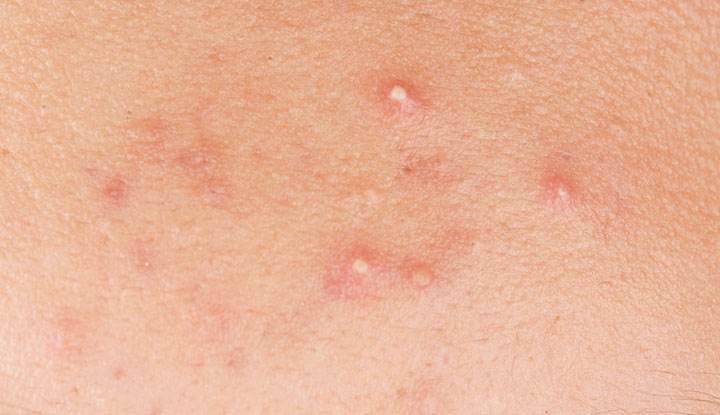
1. Whiteheads (Closed Comedones)
Severity: Mild
These are small, flesh-colored or white bumps caused by clogged pores that haven’t opened at the surface.
Best Actives: BHA (like salicylic acid), RetinoidsUse BHA to unclog pores and retinoids to improve cell turnover. Avoid vitamin C during active breakouts—it may irritate.
-
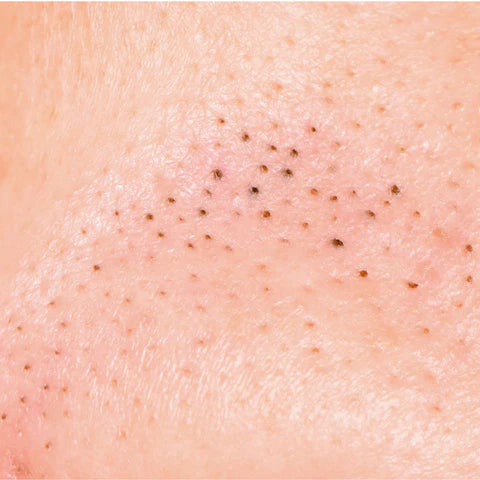
2. Blackheads (Open Comedones)
Severity: Mild
Blackheads are open pores filled with oxidized sebum and dead skin cells.
Best Actives: BHA, RetinoidsSalicylic acid (BHA) penetrates oil and clears pores; retinoids help prevent new clogs. AHA can be used occasionally to smooth texture.
-
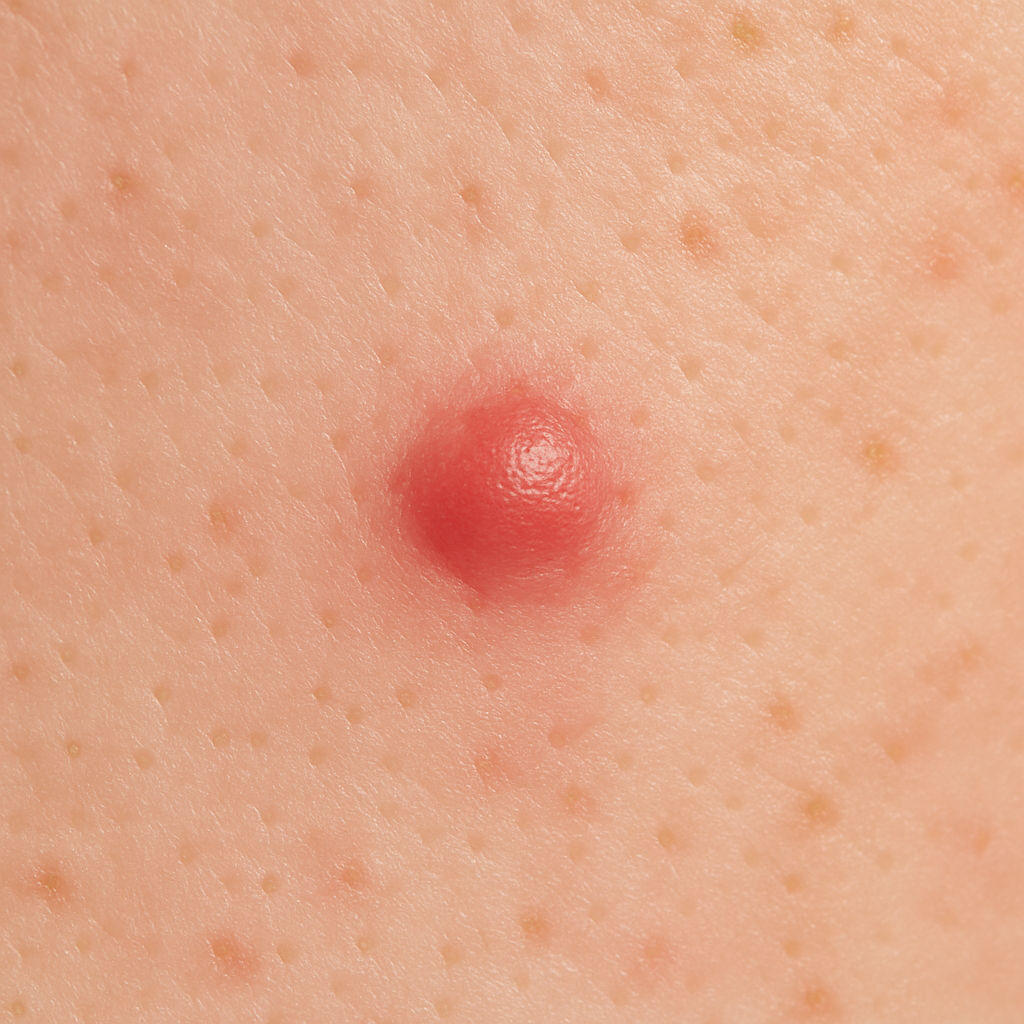
3. Papules
Severity: Moderate
These are small, red, inflamed bumps without pus—often tender to the touch.
Best Actives: Retinoids, Low-dose BHA (spot treat only)Focus on calming inflammation and supporting the barrier. Retinoids can help long-term, but avoid overusing exfoliants. Skip vitamin C—it can sting inflamed skin.
-
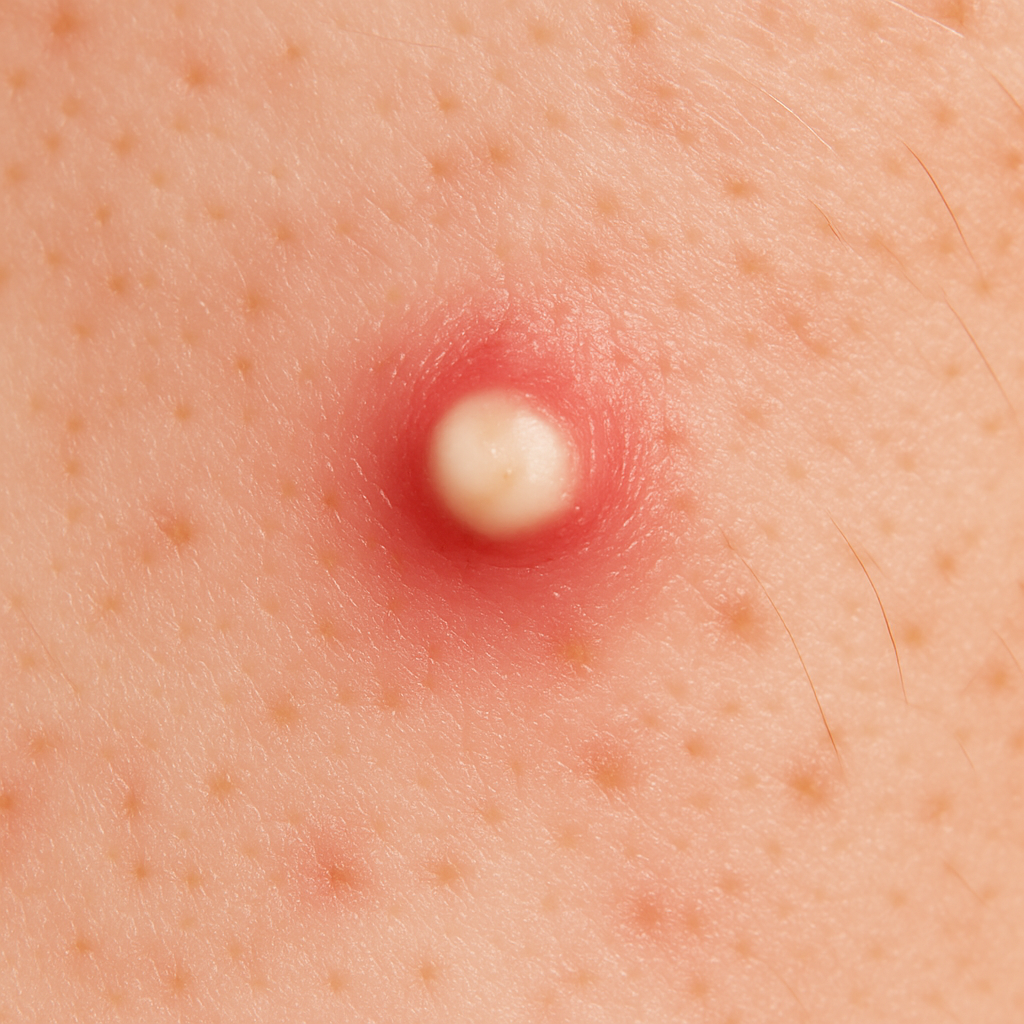
4. Pustules
Severity: Moderate
Pustules are papules with a visible white or yellow center filled with pus.
Best Actives: Retinoids, BHA (carefully), AHA (low %, optional)Use retinoids to reduce clogging and inflammation. Spot treat with salicylic acid. Avoid vitamin C—it can worsen irritation.
-
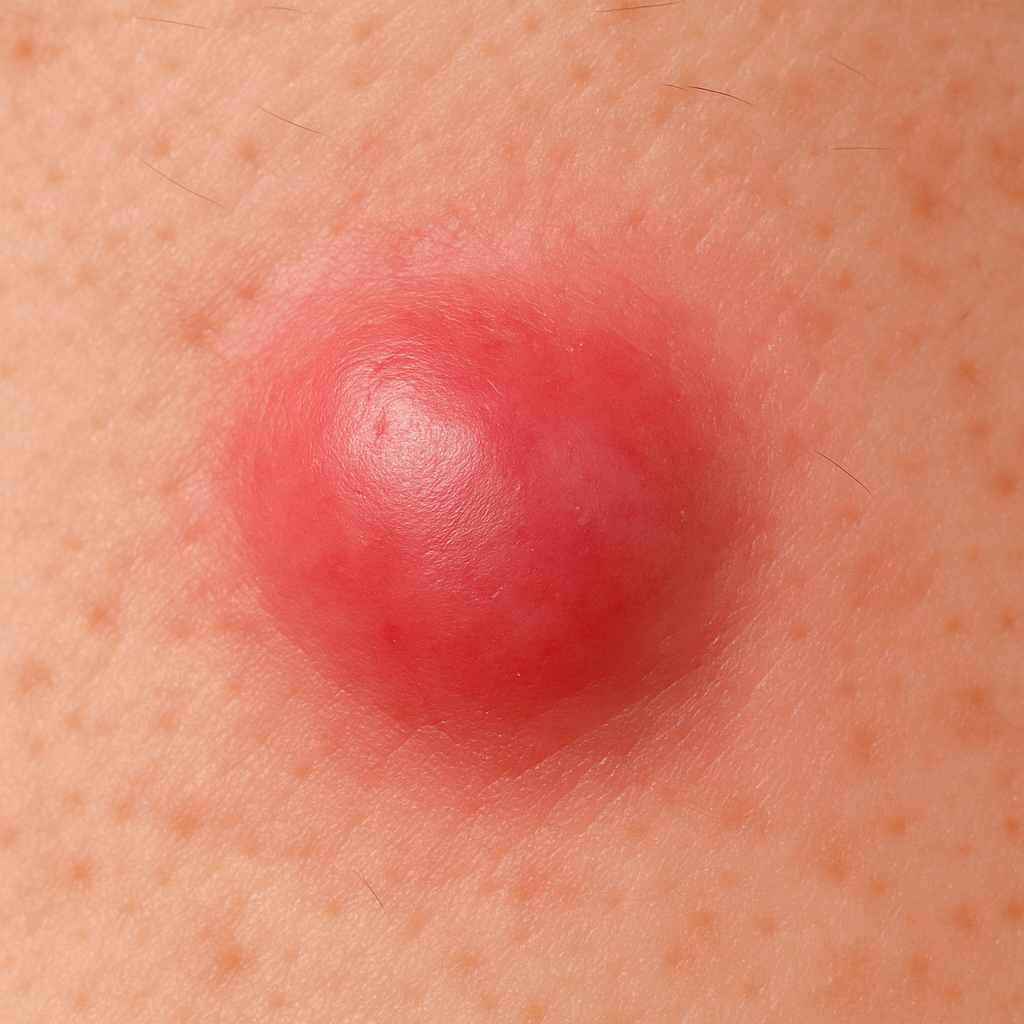
5. Nodules
Severity: Moderate to Severe
Deep, firm, painful lumps under the skin with no visible head—more likely to scar.
Best Actives: Retinoids (prescription if needed), BHA (not effective here), Avoid AHA & Vitamin C during active flareSee a derm if persistent. Retinoids are your best bet; avoid exfoliating too aggressively as it can damage the skin further.
-
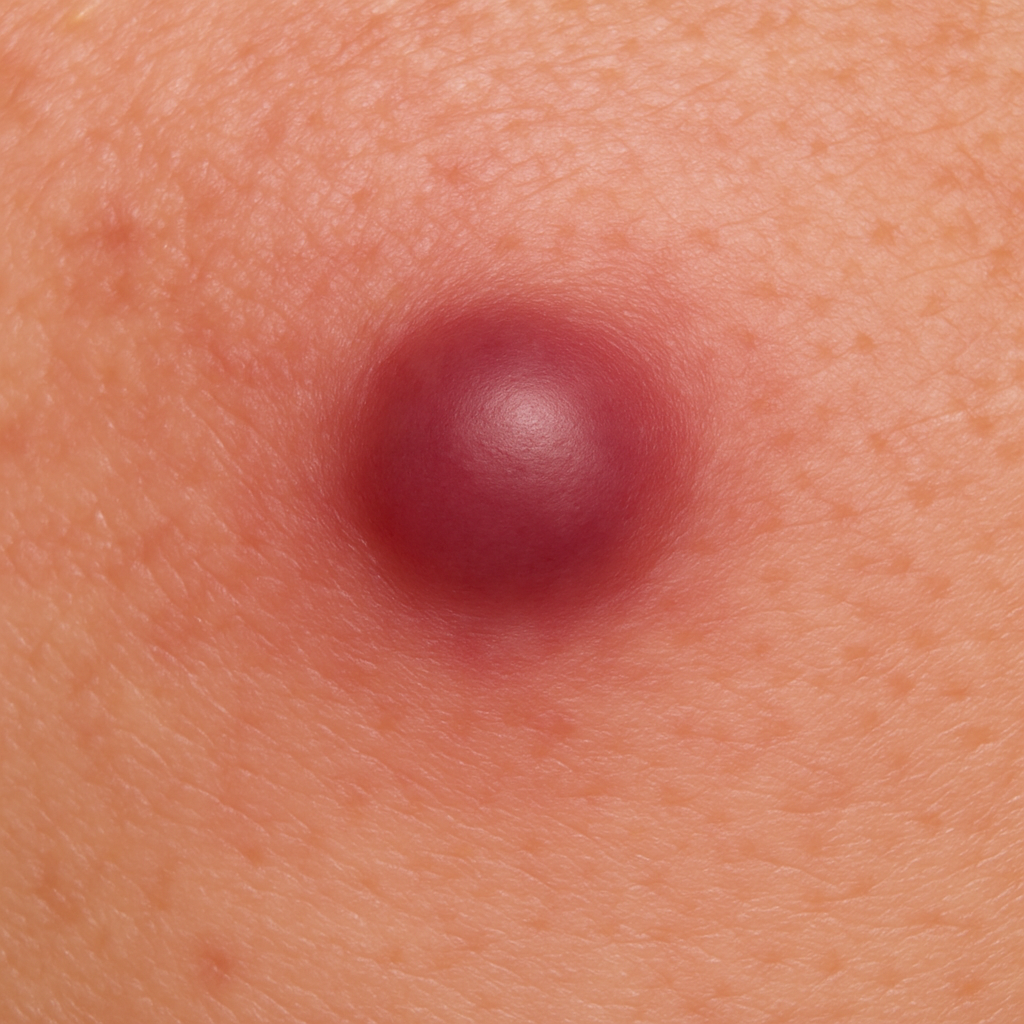
6. Cysts
Severity: Severe
Large, inflamed, pus-filled lesions deep beneath the skin—often hormonal and painful.
Best Actives: Prescription retinoids, Avoid acids and vitamin C during active flaresTopicals alone often aren't enough—speak with a derm. Barrier support, calming care, and hormonal treatments (like spironolactone) may be needed.
Common States of Reactive Skin
Reactive skin can show up in different ways depending on your skin barrier health, immune triggers, and past product use. Here are the four most common patterns:
1. Barrier-Impaired Skin:
Dry, Tight, Flaky
When your skin barrier is damaged—often from over-cleansing or too many actives—it can't hold onto moisture or protect against irritants.
Signs:
- Dry, tight, or rough texture
- Flaking or peeling
- Stinging with even basic products
Best Approach:
- Strip back to a minimal routine
- Use rich moisturizers with ceramides, squalane, and panthenol
- Avoid foaming cleansers, hot water, and exfoliants temporarily
2. Inflammation-Prone Skin:
Red, Blotchy, Easily Triggered
This type reacts to environmental shifts, temperature changes, or emotional stress. Often mistaken for rosacea.
Signs:
- Sudden flushing, blotchiness, or heat
- Sensitive to sun, wind, cold, or spicy foods
- May flare alongside stress or hormonal shifts
Best Approach:
- Include anti-inflammatory ingredients like centella asiatica, green tea, and allantoin
- Choose mineral sunscreens over chemical filters
- Keep routine consistent and calming
3. Product-Sensitive Skin:
Reacts to Formulations
Some skin types become sensitized to specific ingredients, preservatives, or fragrance—not necessarily over-treated, but ingredient-reactive.
Signs:
- Burning, itching, or rash shortly after product use
- May tolerate some brands but not others
- Flare-ups with fragrance, essential oils, or alcohol
Best Approach:
- Look for “fragrance-free” and “hypoallergenic” labels
- Patch test everything
- Stick to short, simple ingredient lists and avoid essential oils
4. Post-Treatment Sensitivity:
Temporary & Triggered by Actives
After procedures (like chemical peels, microneedling, or retinoid use), the skin may temporarily enter a reactive state.
Signs:
- Tightness, dryness, or mild flaking
- Redness after actives
- Feels “stripped” even with gentle products
Best Approach:
- Pause actives for 3–7 days (depending on severity)
- Focus on hydration, barrier support, and SPF
- Reintroduce actives slowly using the buffering method
EVIDENCE-BACKED TREATMENTS
1. CLEANSE WITH CARE—GENTLE, NOT HARSH
Cleansing is essential for acne—but aggressive formulas can strip the barrier and increase sensitivity.
🟢 Choose:
- Gel or cream cleansers (sulfate-free)
- Low-level salicylic acid (0.5–1%) for acne-prone skin
- pH-balanced, fragrance-free options to avoid irritation
🟡 Avoid: foaming cleansers, drying alcohols, or scrubs.
2. TREAT BREAKOUTS WITHOUT WRECKING YOUR BARRIER
When dealing with both acne and sensitivity, gentle actives are key. Start slow and prioritise non-irritating options:
- Azelaic Acid: Reduces redness, targets acne bacteria, and calms skin
- Niacinamide: Regulates oil, reduces inflammation, and supports the barrier
- Low-strength Retinoids (e.g., retinal or encapsulated retinol): Encourage cell turnover without harshness
- Salicylic Acid (BHA): Use sparingly to clear pores and reduce oil
💡 Start with 2–3x/week use and buffer with moisturiser to reduce irritation.
3. FOCUS ON BARRIER REPAIR TO REDUCE REACTIVITY
A healthy skin barrier is your best defense against both breakouts and sensitivity.
🟢 Add in:
- Ceramides: Restore the lipid layer
- Panthenol & Allantoin: Soothe and calm
- Glycerin & Squalane: Hydrate without clogging
- Centella Asiatica or Beta-glucan: Reduce inflammation naturally
When your barrier is healthy, actives work better—and your skin becomes less reactive.
4. AVOID COMMON TRIGGERS THAT MAKE BOTH WORSE
🟡
- Over-washing or exfoliating
- Strong essential oils or fragrance
- High alcohol content in toners or treatments
- Applying too many actives at once
- Skipping SPF (UV stress worsens inflammation)
How to Soothe Reactive Skin
- Simplify your routine—remove exfoliants and actives temporarily
- Hydrate and repair with humectants (glycerin), barrier lipids (ceramides), and calming agents (panthenol, centella)
- Avoid triggers like hot water, foaming cleansers, or alcohol-based toners
- Use the sandwich method (moisturizer → active → moisturizer) to buffer treatments
- Patch test everything before introducing new products
🌞 MORNING: Calm Inflammation, Strengthen Barrier, and Protect
1. Gentle, low-foam cleanser
Removes oil and sweat without disrupting the skin’s protective barrier—key for reactive skin prone to irritation or redness.
🟢 Look for sulfate-free, pH-balanced formulas with ingredients like panthenol, glycerin, or centella.
-
2. Niacinamide or azelaic acid serum
- Niacinamide (2–5%): Regulates sebum, reduces inflammation, and supports skin barrier function.
- Azelaic acid (10–15%): Calms redness, clears pores, and fades post-acne marks without triggering irritation.
💡 Niacinamide is ideal for daily use; Azelaic acid may be best 3–5x/week or alternated.
-
3. Lightweight moisturiser with ceramides
Replenishes lost lipids and helps repair the skin barrier, essential for calming reactivity and maintaining hydration.
Choose gel-cream textures if oily; creamier versions if dry or sensitised.
-
4. Fragrance-free SPF 30–50
SPF is non-negotiable—even for reactive skin. Sun exposure worsens acne inflammation, delays healing, and deepens PIH (post-inflammatory hyperpigmentation).
💡 Look for mineral-based SPFs with zinc oxide if your skin is easily irritated.
🌙 EVENING: Soothe, Regenerate, and Strengthen
1. Cream or gel cleanser
Use a gentle cleanser suited for evening to remove daily buildup without over-cleansing—especially important when using actives at night.
💡 If you're wearing makeup or sunscreen, see the double cleansing tip below
-
2. Retinal or azelaic acid (2–3x/week)
- Retinaldehyde (Retinal): More tolerable than retinol, speeds up cell turnover and helps with clogged pores and texture
- Azelaic acid: Anti-inflammatory, antibacterial, and barrier-friendly—ideal for rosacea-prone or reactive skin
💡 Alternate or cycle based on tolerance to avoid overloading your skin.
-
3. Hydrating serum
Humectants draw water into the skin while calming irritation—making them perfect for replenishing moisture lost from active ingredients.
🟢 Choose: Glycerin or panthenol
💡 They also create an ideal layering base to buffer stronger treatments like retinoids or azelaic acid.
-
4. Barrier-repair night cream
Seals in hydration, reduces TEWL (transepidermal water loss), and encourages overnight repair.
🟢 Look for ceramides, cholesterol, and fatty acids—or multi-functional night creams designed for compromised skin.
💡 Bonus Tips:
Double cleansing (only if needed):
Use an oil-based cleanser first to dissolve makeup or SPF, followed by a gentle second cleanse. This helps prevent congestion while protecting the barrier. Only double cleanse at night, and skip on bare-skin days.
-
Buffer actives to reduce irritation:
Apply a thin layer of moisturiser before or after retinoids or azelaic acid to help minimise stinging and dryness. This is especially helpful when introducing new actives.
⏱️ WHEN TO EXPECT RESULTS
- Niacinamide or azelaic acid: 4–8 weeks for reduced breakouts and calmer skin
- Retinoids: 6–12 weeks for smoother texture and fewer blemishes
- Barrier repair routines: 1–2 weeks for less stinging and improved hydration
- SPF: Daily use prevents future sensitivity and post-acne marks
💡 Track skin progress weekly—and don’t layer too many changes at once. Less is often more when reactivity is involved.
🧘🏾♀️ LIFESTYLE TIPS TO SUPPORT CLEAR, CALM SKIN
- Get consistent sleep (skin heals overnight)
- Manage stress—it spikes cortisol and inflammation
- Avoid harsh physical exfoliants and popping pimples
- Use soft fabrics (e.g., for pillowcases and towels)
- Stay hydrated and eat skin-supportive nutrients (zinc, omega-3s, antioxidants)
❌ COMMON MYTHS ABOUT ACNE & SENSITIVE SKIN
“Acne means your skin is dirty.”
❌ False. Acne is complex—and often linked to hormones, inflammation, or bacteria.
-
“You need to dry acne out to treat it.”
❌ Nope. Over-drying worsens both acne and sensitivity. Focus on balance.
-
“Sensitive skin can’t handle any actives.”
❌ Not true. You just need the right actives, used slowly and strategically.
💚 Final Thoughts
You don’t have to choose between treating breakouts and calming your skin. With the right mix of gentle actives, barrier repair, and consistency, you can reduce acne and soothe reactivity—without triggering flare-ups or long-term damage.
Because clear, healthy skin isn’t about doing more—it’s about doing it smarter.
GUIDES TO HEALTHIER SKIN:
Skin Concerns Series
From hyperpigmentation to hydration, the Skin Concerns Series by Know to Glow breaks down common skincare issues with clarity, science, and strategy.
Each guide is designed to help you understand the root causes, avoid common mistakes, and build a routine that actually works.
Skin Concerns Series
KNOW TO GLOW = SCIENCE+EDUCATION
Know to Glow is both a shop and a hub for essential skincare knowledge. Our goal is to help you achieve healthy skin by understanding the biology behind skincare—what nourishes it and what can compromise it.










